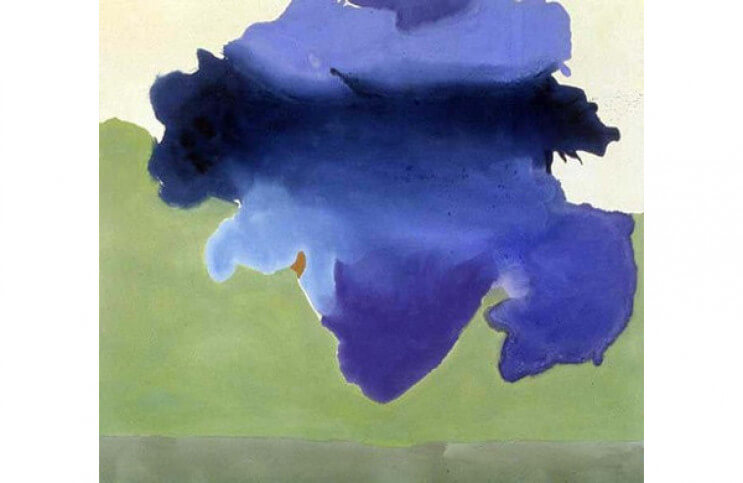
The Revolution Abstract Acrylic Painting Brought to the Medium
Every artistic medium possesses qualities that affect the way viewers interact with it. As one of the newest mediums, acrylic paint communicates, among other things, modernity. What else is unique about acrylics? For example, if a painter painted an abstract acrylic painting and then repainted the same painting several times, each time using a different medium, what would be fundamental differences between the various paintings? There would be physical differences of course, due to the physical properties of the various mediums. But would there also be metaphysical differences? Does acrylic paint possess abstract or symbolic qualities that cause it to evoke different visceral responses than, say, oil paint or watercolors? By examining the history of acrylic paint and its use in abstract painting, perhaps we can discover the revolutionary qualities that set this medium apart.
Thank You Sam Golden
It is difficult today to imagine a time when learning about a particular paint medium required extensive legwork. But in the days before mass media, artists who wanted to stay abreast of the latest trends inpaintcould not simply Google the information they needed; they had to go down to the local paint shop and strike up a conversation. In 1933, the top paint store in New York City on 15th Street, and was called Bocour Artist Colors. An artist named Leonard Bocour and his nephew, Sam Golden, owned the place. They made oil paints byhand,and were renowned for their high-quality products.
In its heyday, Bocour Artist Colors was a vortex attracting many of the most serious artists in New York. Painters would go there and hang out and talk shop and experiment with the different paints. Leonard and Sam would even make custom paints for artists. One day in 1946, an artist came in with a synthetic resin and asked them to make paint out of it. It was an industrial productand had remarkably different characteristics than any of the mediums artists were using at the time. Sam and Leonard worked on it, and after several failed attempts succeeded in turning it into a usable paint. They called it Magna. It was the first acrylic paint for artists.
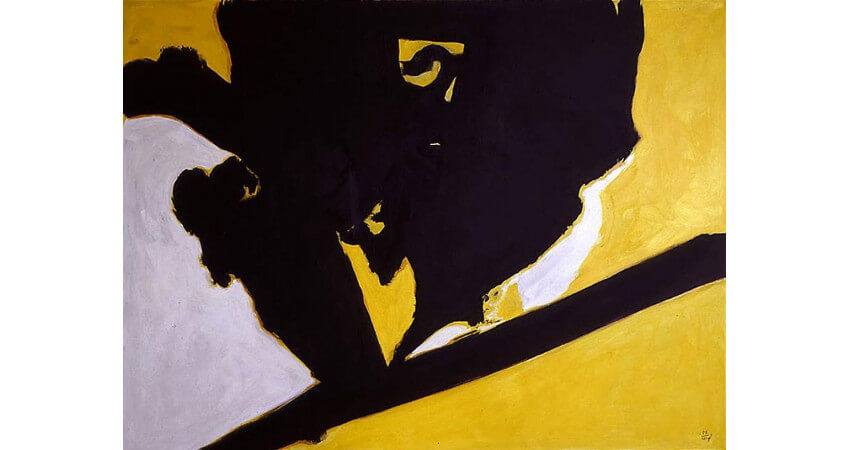 Robert Motherwell - Primal Image II, 1988. Acrylic on canvas. 55 x 74 in. © Robert Motherwell
Robert Motherwell - Primal Image II, 1988. Acrylic on canvas. 55 x 74 in. © Robert Motherwell
The First Abstract Acrylic Paintings
Sam and Leonard offered samples of Magna to the various artists that hung out in their shop. One of the first artists to convert to using it was a young abstract painter named Morris Louis. Louis was born and raised in Baltimore. He had moved to New York at the age of 24, to an apartment just a short distance away from Bocour Artist Colors, on 21st Street. He had been interested in experimental mediums since1937,when he participated in a workshop given nearby on 14th Street by a Mexican painter named David Alfaro Siqueiros. Jackson Pollock and severalother upand coming artists had also attended the Siqueiros Workshop. In it, Siqueiros encouraged the artists to use modern, industrial mediums and to employ techniques like splattering, dripping and pouring.
Siqueiros was a revolutionary who believed that new attitudes needed new mediums and new techniques through which to find their voice. Although Morris Louis participated in the Siqueiros Workshop, he nonetheless continued painting in a figurative style and using traditional mediums like gouache and oil paint for another decade. But in 1948, when Sam and Leonard gave him Magna to try, he saw his chance to transform his work. He embraced abstraction, and from that year forward chose acrylic as his primary medium.
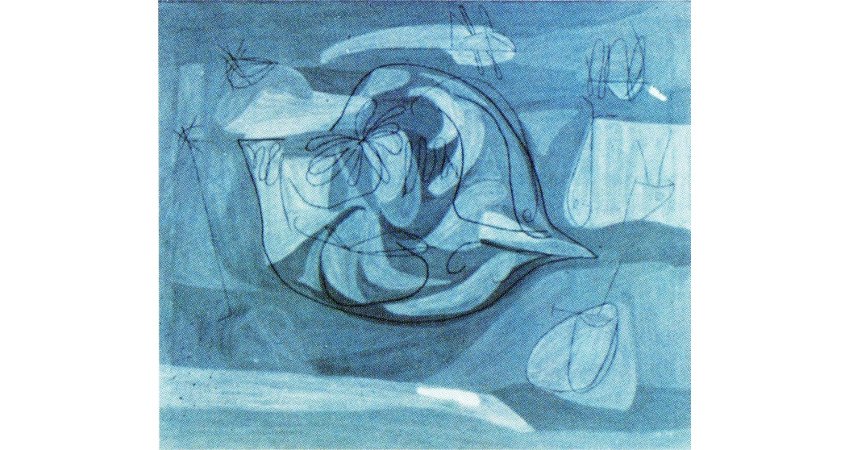 Morris Louis - Untitled (Fish), 1948. Acrylic resin (Magna) on canvas. Dimensions unknown. Inscribed, l.r.: Louis 48, DU17. © 2014 MICA / Artist Rights Society
Morris Louis - Untitled (Fish), 1948. Acrylic resin (Magna) on canvas. Dimensions unknown. Inscribed, l.r.: Louis 48, DU17. © 2014 MICA / Artist Rights Society
Acrylic and the Abstract Expressionists
What about Magna made such an impact on Morris Louis? It may have been the simple fact that it was a modern reflection of the time. It communicated the ingenuity of his generation. But there were other attributes of the acrylic medium that also could have been attractive to him, and which made it attractive to his contemporaries, the Abstract Expressionists.Acrylicpaint dried more quickly than oil paint, so rather than waiting for a layer of paint to dry for days, action painters could paint multiple layers without waiting. Acrylic paint also did not crack, so it allowed for smoother surfaces, even after multiple layers. Plus, it had the opacity of oilpaint,but was easy to work with like watercolors or gouache.
Many of the most famous Abstract Expressionist painters embraced acrylic paints, including Jackson Pollock, Willem de Kooning and Robert Motherwell. They embraced it because it allowed them to experiment, painting quickly, intuitively, in multiple layers and using radical techniques. The medium also found favor with the artists associated with color field painting. Kenneth Noland used acrylics because of their ability to create vibrant color with minimal layers, allowing him to create his smooth, flat,hard edgeabstract canvases. And Mark Rothko used acrylic paints along with oils to create his iconic, contemplative canvases. He found that acrylics reflected light differently than oils. Even today as his paintings fade with time the acrylic elements are decaying differently, adding new interpretive dimensions to the ethereal nature of the works.
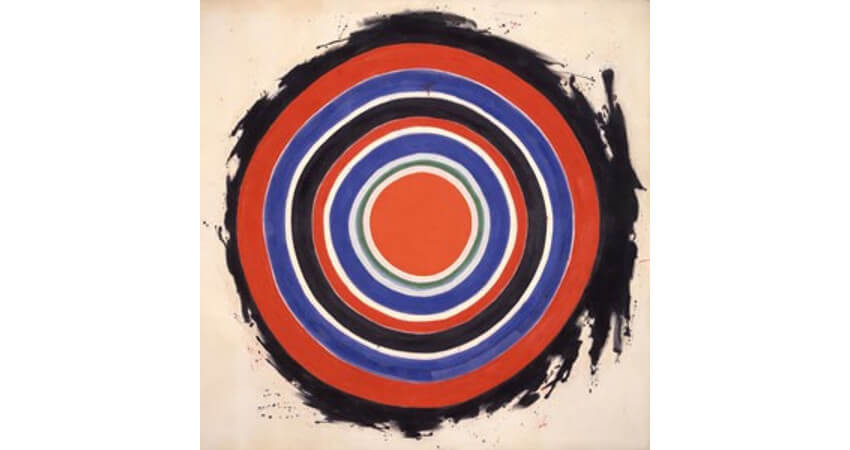 Kenneth Noland - Beginning, 1958. Magna on canvas painting. © Kenneth Noland
Kenneth Noland - Beginning, 1958. Magna on canvas painting. © Kenneth Noland
Other Famous Abstract Acrylic Painters
In 1962, Helen Frankenthaler switched to acrylics from oils. She had previously been using turpentine-thinned oil paints to create her seminal soak-stain paintings, but she became dissatisfied with the way the oil paint interacted with her unprimed canvases. She had to add a large amount of turpentine to oil paint in order to give it the viscosity she wanted. The turpentine diluted the color and also had a detrimental effect on the canvas itself. Today many of her oil paint stained canvases are deteriorating.
Frankenthaler found acrylics had a naturally thinner viscosity. They were more suited for her idiosyncratic technique and provided more vibrant colors to her compositions. Bridget Riley was another painter who worked in a large variety of mediums, but who turned to acrylics later in her career because of their particular physical qualities. She used acrylic paint in her canvases in the 1970s when she became more interested in the optical effects ofcolor,since the opacity and synthetic surface qualities of acrylicsallowsfor more luminosity with fewer layers of paint.
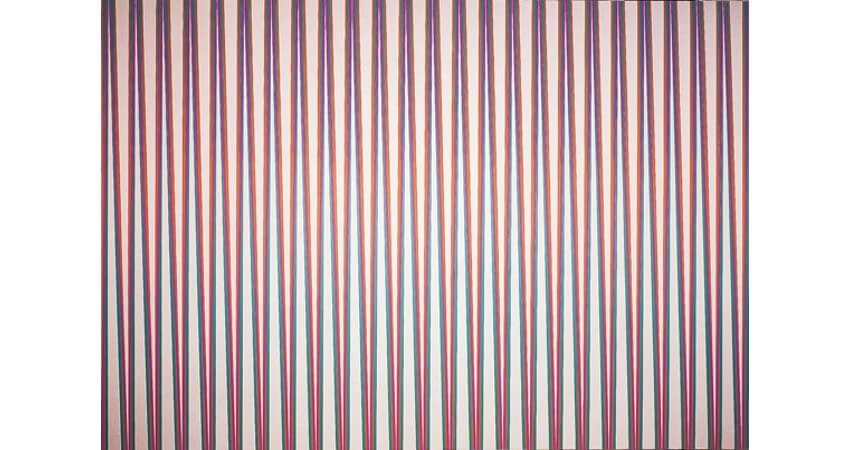 Bridget Riley - Orient IV, 1970, acrylic on canvas. © Bridget Riley
Bridget Riley - Orient IV, 1970, acrylic on canvas. © Bridget Riley
Contemporary Abstract Acrylic Painters
Looking at the various physical qualities that set acrylic paint apart we can see there are many concrete and abstract reasons contemporary painters might use the medium in their work. The medium is modern, luminous, simple and direct, making it perfect for painters like the Australian-born abstract artist Brent Hallard and the French abstract painter Frédéric Prat, who explore issues of color, surface, precision and intent. And acrylics also allow for intuitive, layered aesthetic statements, making it ideal for contemporary painters like Francine Tint, who are expanding the legacy of the Abstract Expressionists.
What all abstract acrylic painters have in common is that they are drawn to this revolutionary medium for its unique idiosyncratic qualities. Whether those qualities can be communicated viscerally to viewers depends on the subjective nature of those interactions. But it is clear that there are fundamentally unique elements to the medium. And since it is still in its infancy, the medium may yet have many more messages still to be discovered.
 Francine Tint - Male Muse, 2016, acrylic on canvas
Francine Tint - Male Muse, 2016, acrylic on canvas
Featured image: Helen Frankenthaler - The Bay, 1963. Acrylic on canvas. 6′ 8-7/8″ x 6′ 9-7/8″. Detroit Institute of Arts. © Helen Frankenthaler
All images used for illustrative purposes only
By Phillip Barcio






